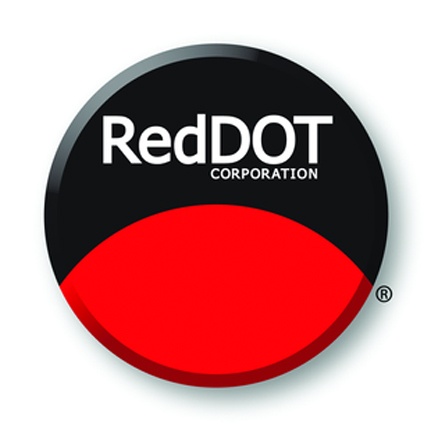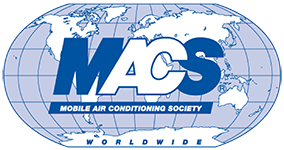Call us Now!
(888) 367-3011(888) 367-3011
Air Conditioning Services

Air Conditioning Specialists
 In addition to keeping you running, our air conditioning technicians can keep you comfortable while you're working. We service and repair all types of air conditioning systems. We use Red Dot Parts, and we're members of – MACS – Mobile Air Conditioning Society and AERA.
In addition to keeping you running, our air conditioning technicians can keep you comfortable while you're working. We service and repair all types of air conditioning systems. We use Red Dot Parts, and we're members of – MACS – Mobile Air Conditioning Society and AERA.
Download a PDF for printable information
Rutt's Machine, Inc. now has a new service:
Mobile Air Conditioning Maintenance, Repair and Installation for Agriculture & Marine Applications, and Construction & Mining Equipment.
Rutt's Machine, Inc. is a member of MACS (www.macsw.org) and a registered subcontractor through MSHA (www.msha.gov). All Rutt's technicians are certified through MACS as required by Section 609 of the Clean Air Act. Rutt's technicians are also MSHA certified (Part 46 & 48) to work in coal mines and stone quarries. (Landfills do not require MSHA certification.) Rutt's has the latest instruments, tools, and technology to do these repairs. We also have the capability to make air conditioning hoses in the shop and in the field (Atco crimp and E-Z clip systems).
Rutt's has the ability to check purity of refrigerant and remove if contaminated. Rutt's can also discharge, vacuum, and recharge systems in the field. Rutt's has the ability to check for leaks through UV dye inspection, electronic sniffer, and nitrogen charge. Rutt's uses UView temperature scans to check for temperature differences in the cabs to fine adjust AC systems. Rutt's can install air conditioning/heat units in machines that previously didn't have air conditioning installed in them. Rutt's can retrofit any systems from R12 to R134A.
Rutt's has in stock many parts for a quick turnaround. Parts in stock at Rutt's include receivers-driers, expansion valves, 12V and 24V compressors, evaporators, cab filters, o-rings, condensers, and motors for your heavy equipment or Class 8 trucks. Rutt's is a dealer for Red Dot, Kysor-Bergstrom, JBAR (Eagle), and DTAC.
Call for our Rates!
Air Conditioning Major Machines
- Robinair 14830A Thermistor Vacuum Gauges
- Mac/Robinair 34700Z R134A Recovery Vacuum, Recycle/Recharge Machine
- Polarseal 77716 Hose Portable Crimper II (Atco Crimp)
(Capabilities for Hose Sizes #6, #8, #10, #12) - Robinair Cooltech 17580 Flushing Machine
- Robinair 17607 Universal Flushing Adapter Kit
- Robinair 17680-2K Universal Recovery Station for Contaminated or Mixed Refrigerant (Scavenger)
- Robinair 18340 Air Conditioning Valve Core Removal Tool Kit
- TIF 9055 Refrigerant Scales
- TIF Provax Portable Recovery and Vacuum Machine
- Mac Tools Manifold Gauge Sets (R12/R134A)
- Robinair 15600 Vacuum Pump
- Honda EU2000i Portable Generator
- Master Sanden Tool Kit
- TIF 16900 Refrigerant Identifier
- TIF ZX-1 Electronic Leak Detector
- UView 580000 Temperature Scan
- Robinair 17607 Flushing Kit
- Neutronics AC Sealant Detection Kit
A comprehensive assessment of your vehicular air conditioning (AC) system involves a thorough examination of various components to ensure optimal performance. Here's our checklist for assessing a vehicle's AC system:
1. Refrigerant Levels:
- Check refrigerant levels to ensure they are within the manufacturer's recommended range.
- Recharge the system if refrigerant levels are low.
2. Compressor Operation:
- Test the AC compressor for proper engagement and disengagement.
- Inspect the compressor for leaks or unusual noises.
3. Condenser and Evaporator Coils:
- Examine the condenser and evaporator coils for dirt, debris, or damage.
- Clean or replace the coils as needed for efficient heat exchange.
4. Expansion Valve or Orifice Tube:
- Inspect the expansion valve or orifice tube for clogs or malfunctions.
- Replace if necessary to maintain proper refrigerant flow.
5. Blower Motor and Fan:
- Test the blower motor for various speed settings.
- Check the fan for proper operation and any obstructions.
6. Air Filter:
- Replace the air filter regularly to ensure proper airflow and prevent contaminants from entering the system.
7. Belts and Pulleys:
- Inspect belts for wear, cracks, or tension issues.
- Check pulleys for proper alignment and function.
8. Temperature Controls:
- Verify that temperature controls are functioning correctly for both heating and cooling modes.
9. Ductwork and Vents:
- Inspect ductwork for leaks or blockages.
- Check vents for proper airflow and adjustability.
10. Electrical Components:
- Test electrical components, including switches, relays, and sensors, for proper operation.
- Address any electrical issues promptly.
11. Refrigerant Pressure:
- Check refrigerant pressure using gauges to ensure it falls within the specified range.
- Address issues related to overcharging or undercharging.
12. AC Lines and Hoses:
- Inspect AC lines and hoses for leaks or damage.
- Repair or replace damaged components to prevent refrigerant leaks.
13. Thermostat:
- Ensure the thermostat is functioning correctly to regulate temperature.
14. Insulation and Seals:
- Check for proper insulation around AC components.
- Inspect seals to prevent air leaks.
15. Condensate Drain:
- Clear the condensate drain to prevent water buildup and potential mold growth.
16. Diagnostic Scan:
- Perform a diagnostic scan to check for any error codes related to the AC system.
17. Overall System Performance:
- Test the overall performance of the AC system under different operating conditions.
AC & ENGINE RADIATOR SERVICE - FAQ
Understanding Coolant and Maintenance
Q: What type of coolant I should use?
A: The best guideline for choosing the correct coolant for your car is to consult your vehicle's owner's manual. Most manufacturers specify a particular type of coolant that's best suited for your vehicle's engine. Using the wrong coolant can lead to decreased efficiency and potential engine damage.
Q: How often should I get a coolant flush?
A: A coolant flush should typically be done every 30,000 to 50,000 miles, but it’s essential to refer to your vehicle's owner's manual for the specific interval recommended by the manufacturer. Regular coolant flushes help maintain the cooling system’s efficiency by removing rust and scale deposits and adding fresh antifreeze.
Q: My coolant is leaking. What's causing that?
A: Coolant leaks can occur for several reasons, such as a cracked radiator, a faulty radiator cap, or damage to one of the coolant hoses. It's crucial to address leaks quickly to prevent overheating and serious engine damage.
Q: What should I do if my coolant light comes on?
A: If your coolant light turns on, it usually indicates low coolant levels, which could suggest a leak or that it’s time to top up your coolant. Check your coolant level when the engine is cool and refill as needed. If the problem persists, it might be time for a professional inspection.
Q: How can I tell if the temperature of my coolant is too high?
A: The normal operating temperature for most engines is between 195°F and 220°F. If your vehicle’s temperature gauge consistently shows higher than this range, it indicates an issue within the cooling system, such as a malfunctioning thermostat, blocked radiator, or insufficient coolant level.
RADIATOR SERVICE
Q: What is involved with getting a full radiator service?
A: Radiator service typically includes flushing the old coolant from the radiator, checking for leaks and damage, inspecting the radiator cap, and then refilling the radiator with fresh coolant. It may also include checking and servicing related components like hoses and the water pump.
Q: If I need to replace my radiator, do any other components need to be replaced?
A: When replacing a radiator, it's often recommended to also replace the radiator hoses, thermostat, and radiator cap. These components can wear out over time, and replacing them along with the radiator ensures the entire cooling system operates efficiently.
Q: How long should a radiator last?
A: The average lifespan of a radiator is typically about 8 to 10 years. However, this can vary based on the vehicle and its conditions of use. Regular maintenance can help extend a radiator’s lifespan.
Q: How will I know it's time to replace my radiator?
A: Signs that it might be time to replace your radiator include consistent overheating, frequent coolant leaks, or if the radiator is visibly damaged or corroded. If you experience these issues, have your radiator inspected by a professional.
Q: What are some reasons my engine might overheat?
A: Engine overheating can be caused by several issues, such as a malfunctioning thermostat, a leak in the cooling system, a blocked radiator, or a failed water pump. It's important to identify and fix the cause of overheating quickly to prevent engine damage.
Regular maintenance, prompt resolution of identified issues, and periodic professional inspections are crucial for ensuring the longevity and efficiency of your vehicle's AC system. If you encounter persistent problems or are unsure about any aspect, consult with one of our certified Rutt's Machine technicians to arrange for an inspection.


Email us at [email protected]
